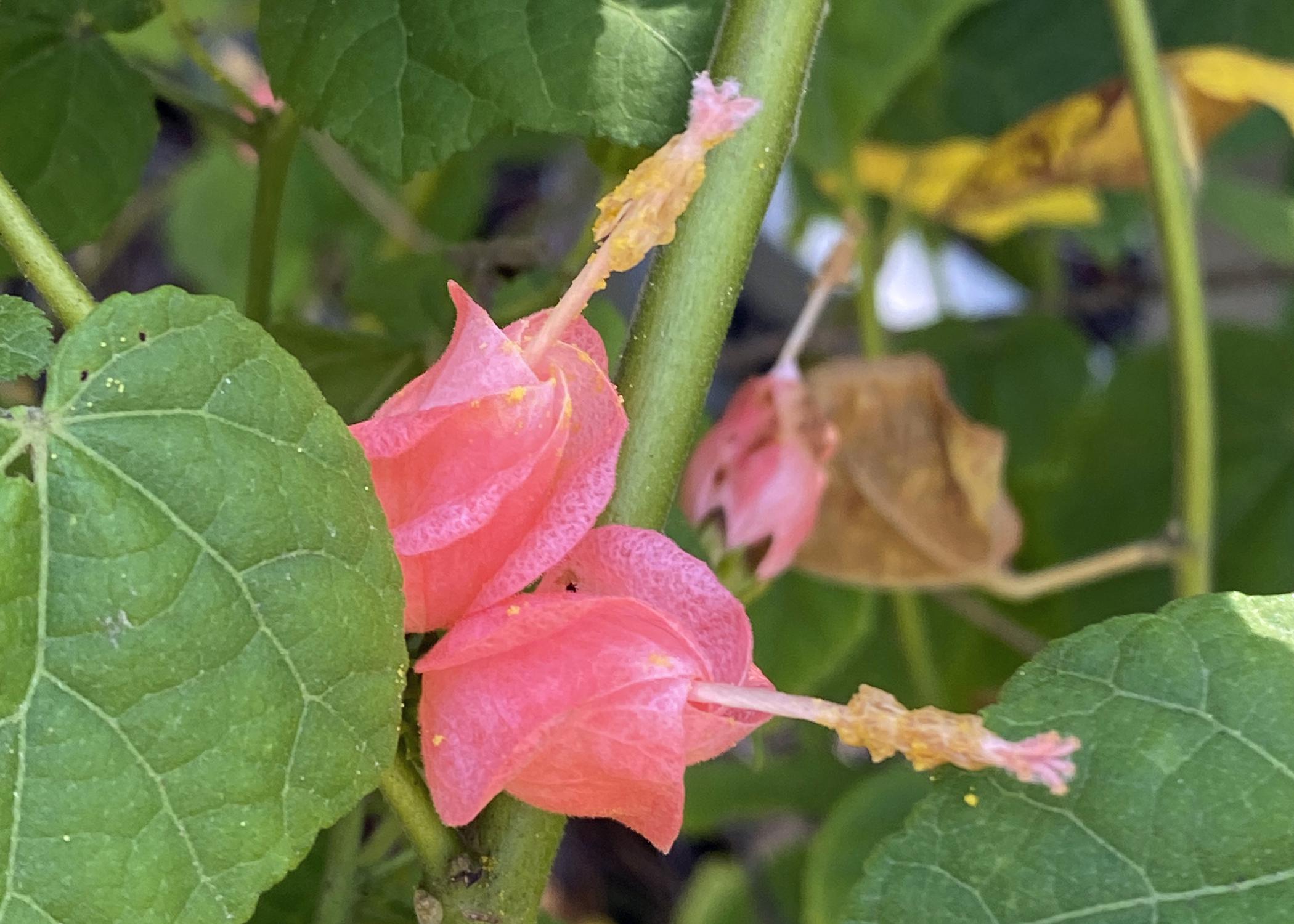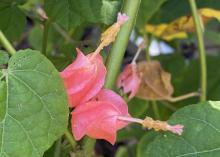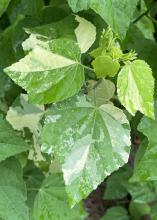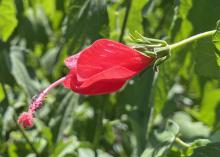Native Turk’s Cap is a good perennial for today’s gardens
I have fond memories of walking daily as a kid past my grandmother’s chain-link fence, admiring the bright red flowers on the Turk’s Cap growing along it. Every time I see those flowers today, childhood memories rush through my mind.
Now as an adult gardener, I’ve come to appreciate Turk’s Cap even more for its beauty and resilience. It’s one of my favorite hardy native perennials that grows well in the U.S. Department of Agriculture zones 7-11.
This coarse shrub has upper stems that are greenish and velvety to the touch but becomes woody near the base.
Its leaves can reach up to 5 inches or more long, with blades that are as broad as they are long. Leaves can be heart-shaped or sometimes weakly 3-lobed with broad teeth along the edges. The upper leaf surface is a deep, dark green, while the lower surface is lighter and velvety to the touch, with prominent palmate veins.
The distinctive red flowers stay partially closed, almost like little wrapped turbans or caps. Blooms are vivid, providing color in late summer through fall and attracting hummingbirds, bees and butterflies, filling the garden with life.
I love how tough this plant is. Turk’s Cap thrives in heat, drought and less-than-perfect soil conditions, though it does prefer to be planted in well-drained spots for the best growth. It does well in both full sun and partial shade, but I’ve noticed it tends to flower more in sunny areas.
Once established, the plant requires minimal care, though you should make sure to water young plants regularly until they are well-rooted.
In warmer climates, it can grow up to 9 feet tall and wide, so prune it back in late winter to keep it in check and encourage fresh growth. Plants growing in cooler climates usually die back to the ground and sprout from the roots next spring.
Several cultivars of Turk’s Cap offer variations in flower color and form, adding even more appeal to this already delightful plant.
One popular variety is Pam Puryear, which has striking pink flowers, adding a softer, pastel hue to the garden. Another cultivar, White Lightning, has beautiful white blooms that create a cool, refreshing contrast to the standard red variety.
My favorite is the variegated Turk’s Cap. The leaves are a mix of green and creamy white, adding ornamental interest even when the plant isn’t in bloom.
In late summer and fall, small, fleshy fruits that resemble tiny red or orange apples or berries develop on the bush.
These fruits -- often referred to as drummonds or Turk’s Cap berries -- are edible and have a mild, sweet taste. This plant is not commonly grown for its fruit, but the berries are sometimes used in jams and jellies or eaten fresh by those who enjoy foraging.
In addition to being consumed by humans, the fruit also attracts wildlife. Mockingbirds and cardinals are particularly fond of the berries. This adds an additional layer of appeal to the plant if you’re interested in creating a wildlife-friendly garden.
For me, Turk’s Cap is more than just a low-maintenance, colorful plant. It’s a plant that brings nostalgia and joy.






